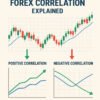What Is Liquidity in Forex?
Liquidity in forex refers to how easily a currency pair can be bought or sold without causing significant price changes. It represents the market’s ability to absorb large transactions without substantial impact on exchange rates. For forex traders, understanding liquidity is essential as it directly affects trading costs, execution speed, and overall market stability.
Whether you’re new to forex trading or looking to deepen your market knowledge, grasping the concept of liquidity will help you make more informed trading decisions and potentially improve your trading outcomes.
Understanding the Concept of Liquidity
In the broader financial context, liquidity describes how easily an asset can be converted into cash without affecting its market price. A highly liquid asset can be quickly sold at a price close to its current market value, while an illiquid asset may require a significant discount to attract buyers.
The spectrum of liquidity vs. illiquidity is crucial to understand:
- High liquidity: Assets trade frequently with minimal price impact between transactions
- Low liquidity: Assets trade infrequently with potentially significant price changes between transactions
In the forex market specifically, liquidity refers to the volume of buy and sell orders available at different price levels. The forex market is often cited as the most liquid financial market globally, with an average daily trading volume exceeding $6.6 trillion. However, liquidity isn’t uniform across all currency pairs or trading times.
KEY POINT: The forex market as a whole is highly liquid, but individual currency pairs can vary dramatically in their liquidity levels.
Why Liquidity Is Important in Forex Trading

Understanding liquidity is not just academic—it has real, practical implications for your trading experience and profitability:
Faster Execution of Orders
In highly liquid markets, there are plenty of buyers and sellers at any given moment. This means your trade orders get filled quickly at your desired price. When you click “buy” or “sell,” the transaction executes almost instantly.
Tighter Bid-Ask Spreads
The bid-ask spread represents the difference between the price at which you can sell a currency pair (bid) and the price at which you can buy it (ask). Higher liquidity typically results in narrower spreads, which means lower transaction costs for traders.
For example, the EUR/USD pair might have a spread of just 0.1 pips during peak trading hours, while an exotic pair like USD/TRY (US Dollar/Turkish Lira) might have a spread of 20 pips or more.
Lower Slippage
Slippage occurs when your trade executes at a different price than expected. In highly liquid markets, slippage is minimal because there are enough counterparties to fulfill your order at or near your requested price. During low-liquidity periods, however, the price might change significantly between the time you place your order and when it’s executed.
Reduced Market Manipulation Risks
Highly liquid markets are harder to manipulate because it takes enormous capital to significantly influence prices. Low-liquidity markets, by contrast, can be more vulnerable to price manipulation by large market players.
Factors That Affect Forex Liquidity
Several key factors influence liquidity levels in the forex market:
Time of Day
The forex market operates 24 hours a day, but liquidity fluctuates significantly throughout the global trading day:
- Highest liquidity: During the London/New York session overlap (1:00 PM – 4:00 PM GMT)
- Moderate liquidity: During main trading hours in major financial centers
- Lowest liquidity: During the Asian session and weekends
The London/New York overlap is particularly significant as these two financial centers represent over 50% of all forex trading volume. During this 3-hour window, most major currency pairs experience their peak liquidity.
Currency Pairs
Not all currency pairs are created equal when it comes to liquidity:
- Major pairs involving the USD, EUR, JPY, GBP, CHF, CAD, and AUD are the most liquid
- Minor pairs between these major currencies (excluding USD) have moderate liquidity
- Exotic pairs involving currencies from emerging markets typically have lower liquidity
Market Events and News
Liquidity can change dramatically around significant economic data releases, central bank announcements, or geopolitical events. Some traders deliberately avoid trading during major news events due to potential liquidity gaps and increased volatility.
Global Economic Activity
Broader economic conditions affect forex liquidity. During financial crises or periods of extreme uncertainty, liquidity can deteriorate across all markets, including forex.
High vs. Low Liquidity Examples

High Liquidity: Major Currency Pairs
The EUR/USD (Euro/US Dollar) is the most traded currency pair globally, accounting for approximately 24% of daily forex trading volume. This extraordinary liquidity means:
- Spreads as low as 0.1-0.3 pips with major brokers
- Virtually instant execution of even large orders
- Minimal slippage under normal market conditions
- Trading possible 24 hours a day with consistent liquidity
Other highly liquid pairs include USD/JPY, GBP/USD, and USD/CHF.
Low Liquidity: Exotic Currency Pairs
Consider USD/TRY (US Dollar/Turkish Lira) as an example of a lower liquidity pair:
- Spreads might be 20 pips or wider
- Larger orders may cause noticeable price movements
- Significant slippage more common, especially during news events
- Trading may be difficult during certain hours
Case Study: Trading During a Liquidity Event
During Turkey’s 2018 currency crisis, the USD/TRY pair experienced extreme volatility and liquidity issues. Traders reported:
- Spreads widening to 100+ pips
- Orders taking seconds or minutes to fill
- Slippage of hundreds of pips on market orders
- Some brokers temporarily suspending trading in the pair
By contrast, even during the same period, EUR/USD maintained relatively stable liquidity and normal trading conditions, highlighting the dramatic difference between high and low liquidity pairs.
How Liquidity Affects Spreads and Volatility
The Mechanics of Bid-Ask Spreads
The bid-ask spread directly reflects liquidity conditions. Market makers and liquidity providers narrow their spreads when they’re confident about market conditions, which typically happens in highly liquid environments.
In simple terms:
- High liquidity → Many market participants → Competition among providers → Tighter spreads
- Low liquidity → Fewer market participants → Higher risk for providers → Wider spreads
Liquidity and Volatility Connection
While liquidity and volatility are distinct concepts, they’re closely related:
- Low liquidity often amplifies volatility because individual trades can have a bigger price impact
- During volatile news events, liquidity may temporarily decrease as market makers widen spreads or step back from the market
- Highly liquid markets tend to be less volatile in general, showing more gradual price changes
IMPORTANT FOR NEW TRADERS: If you’re just starting in forex, focus on trading major currency pairs during main market hours to benefit from higher liquidity and more predictable market conditions.
Liquidity Providers and Market Participants
The Liquidity Hierarchy
The forex market has a structured hierarchy of liquidity provision:
- Tier 1 Liquidity Providers:
- Central banks
- Large commercial and investment banks (JPMorgan, Deutsche Bank, Citibank, etc.)
- These institutions form the interbank market and provide the deepest pool of liquidity
- Tier 2 Participants:
- Smaller banks
- Large hedge funds and institutional investors
- ECNs (Electronic Communication Networks)
- Tier 3 Participants:
- Retail forex brokers
- Smaller financial institutions
- Corporations conducting international business
- Tier 4 Participants:
- Retail traders
- Small businesses
The Role of ECNs
Electronic Communication Networks have revolutionized forex trading by providing:
- Direct access to multiple liquidity providers
- Transparent pricing
- Automated matching of buy and sell orders
- Reduced trading costs through increased efficiency
Popular ECNs include EBS, Hotspot FX, and Currenex. Many retail brokers now offer ECN-type accounts that provide more direct access to market liquidity.
Tips for Trading in Different Liquidity Conditions

Best Times to Trade for High Liquidity
For optimal liquidity conditions:
- Trade during major session overlaps, especially London/New York (1:00 PM – 4:00 PM GMT)
- Focus on major currency pairs like EUR/USD, GBP/USD, and USD/JPY
- Be aware of market-moving events by keeping an economic calendar handy
Managing Risk in Low Liquidity Environments
When trading in less liquid conditions:
- Use limit orders instead of market orders to avoid unexpected slippage
- Widen your stop-loss orders to account for potentially larger price swings
- Reduce position sizes to minimize the market impact of your trades
- Avoid trading around major news events if you’re concerned about liquidity gaps
Choosing Brokers with Deep Liquidity Access
Your broker’s liquidity access directly affects your trading experience:
- Look for brokers with multiple liquidity providers
- Check typical spread data across different times of day
- Research the broker’s execution speed and quality
- Consider ECN or STP (Straight Through Processing) brokers for more direct market access
BROKER TIP: Ask potential brokers about their liquidity providers and how they handle order execution during volatile market conditions.
Conclusion: Making Liquidity Work for Your Trading Strategy
Understanding liquidity in forex isn’t just academic knowledge—it should actively inform your trading decisions. Here’s how to incorporate liquidity considerations into your strategy:
- Match your trading style to appropriate liquidity conditions
- Scalpers and high-frequency traders need the highest liquidity environments
- Swing and position traders can better tolerate lower liquidity
- Use liquidity as a risk management tool
- Be more conservative with position sizing in less liquid markets
- Set wider stops when trading exotic pairs or during off-hours
- Develop awareness of how liquidity fluctuates
- Keep track of how spreads change throughout the trading day
- Notice how news events affect your chosen currency pairs
By making liquidity a central consideration in your forex trading approach, you’ll be better equipped to avoid unnecessary costs, manage execution risks, and ultimately improve your trading performance.
Remember that in forex trading, understanding market structure elements like liquidity can be just as important as mastering technical analysis or developing entry signals. Paying attention to these market fundamentals sets apart thoughtful traders from those who struggle to understand why their strategies perform inconsistently.
FAQs About Forex Liquidity
What is a liquidity trap in forex?
A liquidity trap occurs when traders are unwilling to enter the market despite favorable conditions, often due to extreme uncertainty. This is different from normal low liquidity and can happen even in major currency pairs during crises.
Can liquidity dry up suddenly?
Yes, forex liquidity can evaporate quickly during unexpected events like:
Flash crashes
Central bank interventions
Political crises
Major economic surprises
This is why risk management is crucial, especially when trading before high-impact news releases.
Is high liquidity always good for traders?
While high liquidity generally benefits traders through tighter spreads and better execution, some trading strategies actually target low-liquidity periods to capitalize on inefficiencies. However, for beginners, trading in high-liquidity conditions is typically safer and more predictable.
How can I tell if a currency pair has good liquidity?
Look for these indicators:
Tight bid-ask spreads
High trading volume
Stable price movement without large jumps
Quick order execution with minimal slippage
Should I avoid exotic currency pairs as a beginner?
For new traders, it’s generally advisable to start with major currency pairs due to their higher liquidity, lower costs, and more predictable behavior. As you gain experience, you might explore minor and exotic pairs with an understanding of their liquidity limitations.












